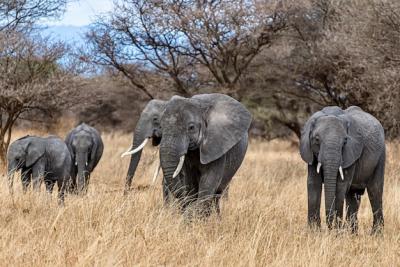A Chimpanzee or Pan troglodytes – Free Stock Photo for Download
A Closer Look at the Chimpanzee (Pan troglodytes)
The chimpanzee, known scientifically as Pan troglodytes, is one of the most fascinating primates on our planet. These remarkable animals share a significant amount of their DNA with humans, which makes them an important subject of study in understanding human evolution and behavior.
Physical Characteristics of Chimpanzees
Chimpanzees are large primates with some distinct physical traits. Some key features include:
- Body Structure: Chimpanzees have long arms, short legs, and a robust body that supports their lifestyle.
- Facial Features: They have a flat nose, expressive eyes, and ears that are more protruding compared to humans.
- Fur: Their bodies are covered with coarse hair, which varies from black to brown, depending on the individual.
Habitat and Distribution
Chimpanzees primarily reside in the rainforests and savannas of West and Central Africa. Their natural habitat provides them with the necessary resources for survival, including food and shelter.
Diet and Eating Habits
Chimpanzees are omnivorous, meaning they consume a varied diet. Their common food sources include:
- Fruits: They enjoy a wide variety of fruits, which are a significant part of their diet.
- Leaves: Leaves provide essential nutrients that help them thrive.
- Insects: Termites and ants are popular snacks for chimpanzees, showcasing their tool-using abilities to catch them.
Social Structure and Behavior
Chimpanzees are known for their complex social structures. They live in groups known as communities, which can consist of anywhere from 20 to over 100 individuals. Within these communities, you can find:
- Hierarchy: Chimpanzees have a well-defined social hierarchy, with dominant males leading the group.
- Communication: They communicate through vocalizations, gestures, and facial expressions, conveying their emotions and needs effectively.
- Play and Learning: Young chimps engage in playful activities that are vital for developing skills and social bonds.
Conservation Status
Chimpanzees face numerous threats in the wild, including habitat loss, poaching, and the illegal wildlife trade. Conservation efforts are crucial in ensuring the survival of this remarkable species. Various organizations are working hard to protect chimpanzee populations and their habitats through:
- Habitat Protection: Creating and enforcing protected areas to preserve their natural environment.
- Education: Raising awareness about the importance of conserving chimpanzees and their habitats.
- Research: Conducting studies to better understand their behavior and needs.
Conclusion
The chimpanzee holds a special place in the animal kingdom and in our understanding of evolution. Their intricate social behaviors, physical characteristics, and threats to their survival highlight the importance of conservation efforts. By learning more about these intelligent beings, we can appreciate their role in our world and work towards ensuring their future.












